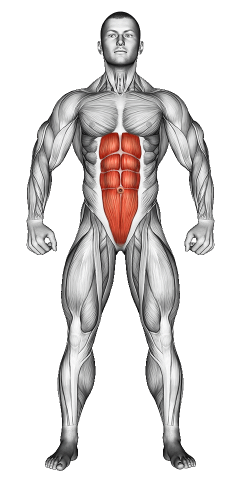Reverse Crunches: Video Tutorial & Exercise Guide

Written By: Claude Michael
Updated: Dec 26, 2024
| Workout | Reverse Crunches |
| Primary Muscle Group | Abs |
| Equipment Required | Mat |
| Force Type | Bodyweight |
| Mechanics | Isolation |
| Exercise Type | Core Stability |
| Difficulty | Beginner to Intermediate |
Reverse Crunches: Video Tutorial & Exercise Guide
- 1.Reverse Crunches: Muscle Groups
- -1.1Primary Muscle Group
- -1.2Secondary Muscle Group
- 2.Reverse Crunches: Step-by-Step Guide
- 3.Reverse Crunches: Overview
- 4.Reverse Crunches: Benefits
- 5.Reverse Crunches: Pro Tips & Advanced Techniques
- 6.Reverse Crunches: Progression Plan
- 7.Reverse Crunches: Frequently Asked Questions (FAQs)
Reverse Crunches: Step-by-Step Guide
- Step 1: Lie flat on your back on a mat. Bend your knees and bring them up to a 90-degree angle, keeping your feet off the ground. Place your hands by your sides or under your hips for extra support.
- Step 2: Engage your core. Press your lower back into the mat and feel your abs tighten. Keep this connection to the floor throughout the movement to target your core effectively.
- Step 3: Lift your hips off the ground by pulling your knees toward your chest. Use your abs to lift, not your legs. Control the motion as you roll your hips up, feeling the squeeze in your lower abs.
- Step 4: Lower your hips back down slowly, bringing your knees back to the 90-degree starting position. Don’t let your feet touch the floor. Keep the movement controlled, focusing on your core as you lower.
- Step 5: Breathe out as you lift your hips, and breathe in as you lower them. Focus on steady, controlled breaths to support each movement and keep your core engaged.
- Step 6: Repeat for the desired number of reps, keeping your core tight and your movements smooth. Stay focused on using your abs for each rep.
Reverse Crunches: Overview
Reverse Crunches target your abs, specifically your lower abs, by lifting your hips rather than your shoulders. This exercise strengthens your core and helps you build control and stability. Reverse crunches are great for all fitness levels, giving your core an effective workout without putting strain on your neck or back.
Reverse Crunches: Benefits
Reverse Crunches build core strength, especially in the lower abs, and improve stability. They help strengthen the abdominal muscles without straining the neck or upper back, making them a safe choice for many fitness levels.
Reverse Crunches: Pro Tips & Advanced Techniques
- Keep Your Core Tight: Focus on using your abs to lift your hips rather than swinging your legs. This keeps the work in your core.
- Avoid Using Momentum: Move slowly and control each rep. Avoid quick movements or swinging, which can take the focus off your abs.
- Don’t Let Your Feet Touch Down: Keep your feet off the floor for the entire set to maintain tension in your abs.
- Breathe Steadily: Exhale as you lift and inhale as you lower. Controlled breathing helps you stay focused and steady.
Reverse Crunches: Progression Plan
Beginner
Intermediate
Advanced
Reverse Crunches: Frequently Asked Questions (FAQs)
What muscles do Reverse Crunches work?
+Reverse Crunches mainly target the lower abs and core, helping you build a strong, stable midsection.
Can I add Reverse Crunches to any workout?
+Yes! Include them in any core workout or as part of your ab routine for variety and strength.
Are Reverse Crunches suitable for beginners?
+Absolutely! Beginners can start with smaller movements and build up strength over time.
How can I make Reverse Crunches easier?
+Keep your hands under your hips for extra support, and don’t lift as high. This adjustment helps you control the movement.
How often should I do Reverse Crunches?
+Perform reverse crunches 2-3 times a week as part of your core routine.
What common mistakes should I avoid?
+Avoid using your legs to swing or relying on momentum. Focus on slow, controlled movements, and keep the tension in your abs for the best results.
Share
Don’t Wish for It, Work for It – Join the FlexXP Newsletter Today!
Thank you for signing up for the FlexXP Newsletter!
This site is protected and the Google Privacy Policy and Terms of Service apply.
